According to Harley-Davidson lore, William Harley and Arthur Davidson met in the late 1890s. They became fast friends because of their shared interest in mechanics and design.
By the turn of the century, one was working as a draftsman, the other a pattern-maker. But they still hadn’t hit upon an idea to combine their interests and talents.
As fate would have it, while out on the town one night, the two men attended a performance of Anna Held. She was a Vaudevillian performer known for her risque stage shows.
Although there was much to gawk at on stage, Harley and Davidson were only interested in a prop Miss Held used to propel herself across the stage. It was a three-wheeler (trike, if you will) run by a single-cylinder engine.
Though nobody in the audience could have guessed, that short ride sparked the imagination of the two men. It would effectively ignite a revolution in vehicle and manufacturing history.
In 1903, William Harley and Arthur Davidson founded Harley-Davidson. This is now one of the world’s largest motorcycle manufacturers and an iconic brand widely known for its loyal following of bikers, enthusiasts, and collectors.
Today there are owner-clubs and events held worldwide, as well as a brand-focused museum.
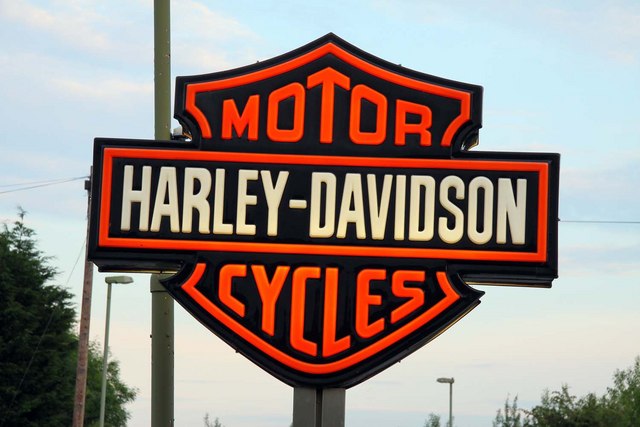
William S. Harley
William S. Harley was born in 1880 in Milwaukee, Wisconsin, to William Harley Sr., a railway engineer, and Mary Smith of Cambridgeshire, England.
Little is known about his childhood. But at the age of 15, Harley started working at a bicycle factory. First in assembly, then as a draftsman. Harley’s interest in bicycles, coupled with his natural mechanical inclination, sparked his curiosity about motorized two-wheelers.
In 1901, Harley was promoted to full-time draftsman at the Barth Mfg. Co. This is where he met and became best friends with Arthur Davidson, a pattern-maker for the company.
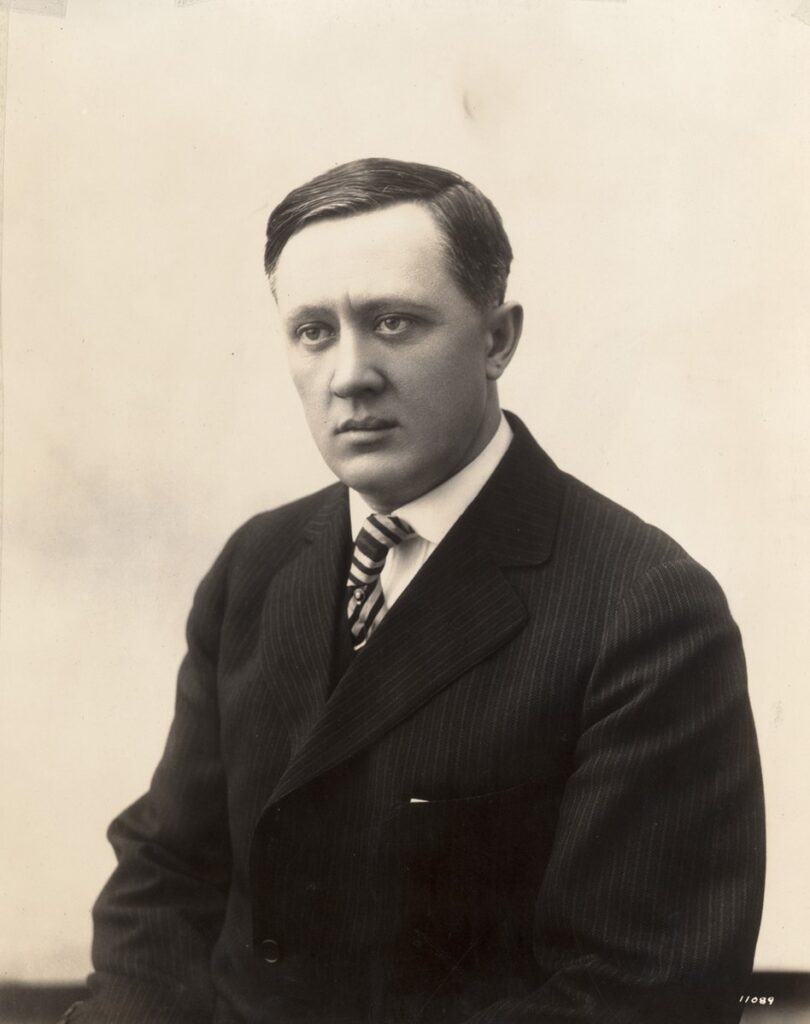
Harley had already been considering ways to mount an engine on an ordinary bicycle. But it was only after the two men attended the performance of Vaudevillian performer Miss Held, that Harley and Davidson began working on their own design in a small wooden shed in the Davidson family’s backyard.
Over the next few years, Harley and Davidson worked on their motor-bicycle. They had the help of Davidson’s brothers.
Also, a man named Henry Melk, who was a lathe operator, owned a machine shop in north-side Milwaukee. And later, a machinist named Ole Evinrude (later known as the inventor of the outboard boat motor).
Harley and Davidson succeeded in building their first successful motorized bicycle prototype in 1903. It featured a looped frame and gasoline-powered engine driven by a leather belt.
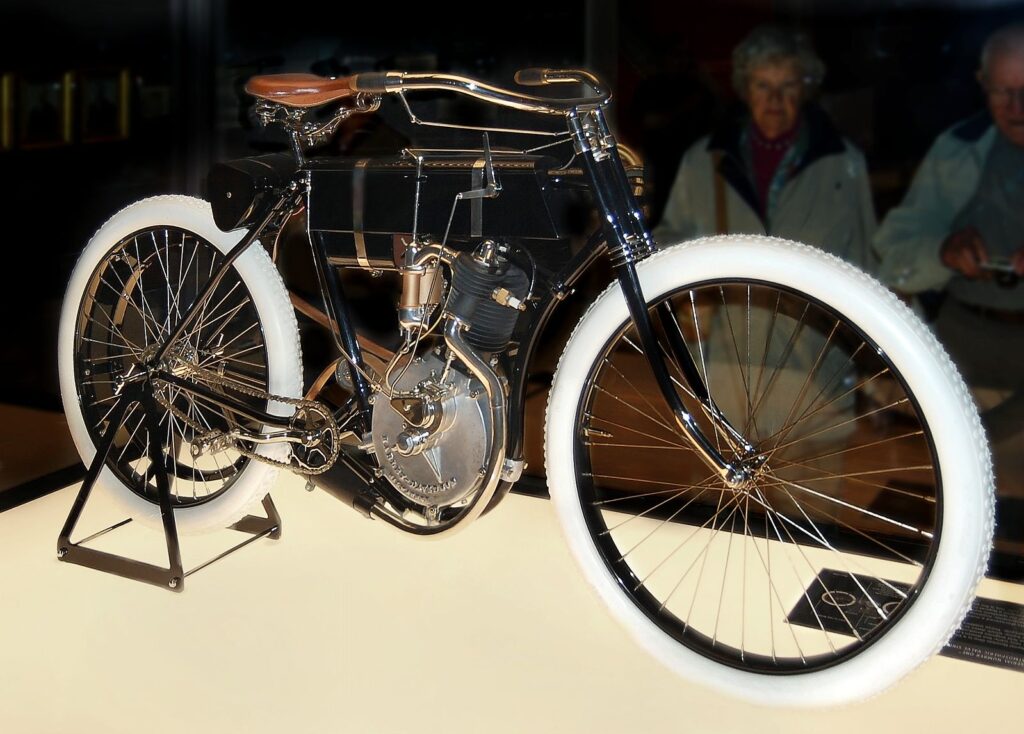
Later that same year, the two men founded Harley-Davidson–despite having not yet built a fully functional motorized two-wheeler.
For the next three years, the two men tested and refined their “motorcycle,” making improvements to the engine, frame, and transmission. By 1906, they finally produced the reliable, road-worthy motorcycle they’d envisioned.
Harley and Davidson established their first Harley-Davidson factory in Milwaukee in 1906. They then began producing motorcycles for sale to the general public.
In 1907, Harley completed a degree in mechanical engineering at the University of Wisconsin–Madison.
That same year, Harley-Davidson became Harley-Davidson, Inc.
In 1910 Harley married Anna Jachthuber, with whom he had two sons and a daughter. In his free time, Harley enjoyed hunting, fishing, and playing golf, and was also noted for his affinity for sketching and photographing wildlife.
After over 40 years of dedication to his craft, Harley died of heart failure in Milwaukee on September 18, 1943, at the age of 62. He remained involved in the company until his final days.
Arthur Davidson
Arthur Davidson was born in 1881 in Milwaukee, Wisconsin, to William C Davidson, a cabinetmaker born in Angus, Scotland, and Margaret Adams McFarlane, from Cambridge, Wisconsin. The Davidsons had five children: Janet May, William A., Walter, Arthur, and Elizabeth.
Little is known about Davidson prior to being hired as a pattern-maker at Barth Mfg. Co. His favorite pastime as a boy is said to have been finding remote spots in Wisconsin to fish—which he reached by bicycle.
Although he had entertained the notion of a motorized bicycle that would replace pedal power, he’d never considered building one himself. That is, until he met William S. Harley, a draftsman at the company where he worked.
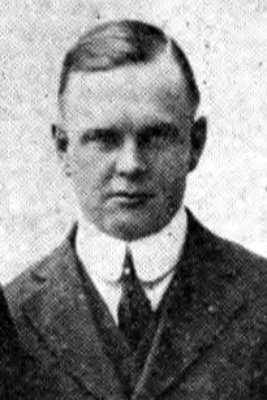
They quickly discovered that they had a shared interest in mechanics and design. Davidson was intrigued by Harley’s idea to motorize bicycles.
After attending Miss Held’s Vaudevillian performance, they decided to make Harley’s idea a joint business venture. Harley and Davidson began their operation in the Davidson’s tiny 10′ X 15′ back-yard shed; The Harley-Davidson Motor Company painted on the door.
Though they weren’t aware of it, there were several other companies in the US working on the very same idea. For their motorized bicycle to compete, it would have to function better than all the others. It didn’t take long for the two men to realize that even with their combined knowledge and creativity, they’d need a skilled mechanic to actually build their machine.
So Davidson enlisted the help of his brother, Walter. Walter was a railroad machinist from Kansas he enticed to visit with a promise to ride their new “motorcycle.”
Upon arriving in Milwaukee, however, Walter discovered that he would have to help William and Arthur build their motorcycle before he could ride it. He then quit his railroad job to invest in their dream.
With two of the Davidson brothers now involved in the enterprise, their eldest brother, William, a tool-room foreman at a Milwaukee railroad shop, offered to pitch in.
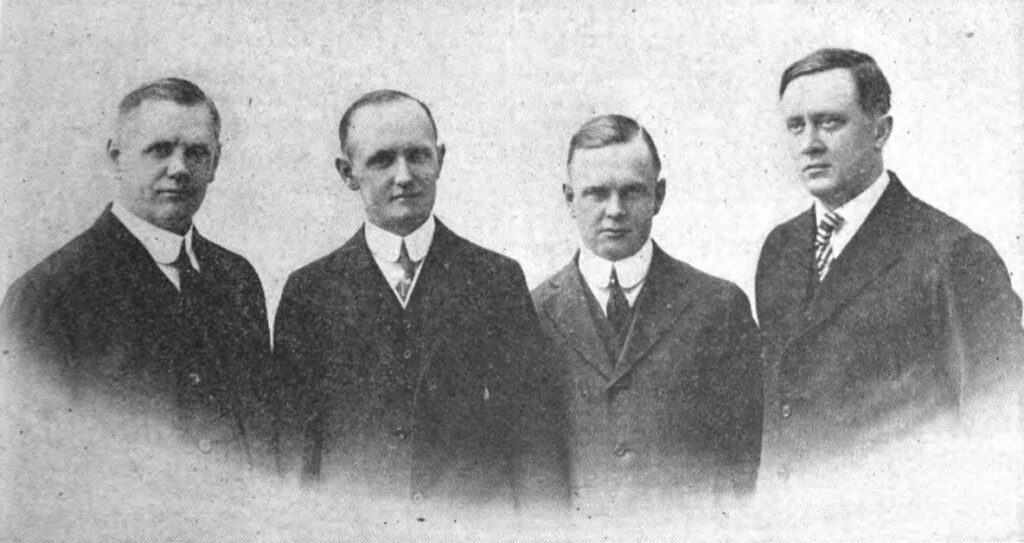
Soon after, Harley and Davidson moved part of their operation to a machine shop owned by their friend Henry Melk, a lathe operator.
By 1903, the efforts of the five men resulted in the first fully functional Harley-Davidson motorized bicycle prototype. It featured a looped frame, a gasoline-powered engine, and a leather drive belt.
Within three years they’d perfected a reliable, road-worthy “motorcycle” ready to market to the public.
In 1907, The Harley-Davidson Motor Company became Harley-Davidson, Inc. Harley was listed as Chief Engineer and Treasurer. Davidson was the Secretary and General Sales Manager. From that time forward, the fate, fame, and fortune of the two men were inextricably intertwined.
On December 9, 1908, Davidson married Clara Augusta Biesel, in Milwaukee, Wisconsin. Together they had (at least) two sons and one daughter.
On December 30, 1950, after a lifetime devoted to motorcycles, Arthur Davidson was killed in a two-car collision just three miles from his Wisconsin home, at the age of 69. Davidson’s wife, Clara, was also killed.
Establishing a Brand: Harley-Davidson, Inc.
In 1903, Arthur Davidson met Chicago businessman Carl H. Lang. Lang offered to sell new Harley-Davidson motorcycles from his Adams St. shop in Chicago. This made him the first official dealer.
In January of 1905, the company placed small advertisements in the Automobile and Cycle Trade Journal. They were offering bare Harley-Davidson engines to the do-it-yourselfers.
By April they were producing complete motorcycles on a limited basis. That first year, Carl H. Lang sold three bikes from the five built in the Davidson backyard shed.
In 1906, Harley and Davidson built their first dedicated factory, on a parcel of land on Chestnut Street, just one block from the Davidson home. At the new factory, production increased to 150 motorcycles the first year.
In September of 1907, the company was officially incorporated. That same year they acquired their first major market: police departments across the region. To this day, tens of thousands of police officers patrol the streets and highways on Harley-Davidson motorcycles.
In 1908, Carl H. Lang hit upon a promotional idea: He’d lead a motorcycle ride of his customers around the city to attract business. Setting a precedent, similar events continue to define Harley-Davidson. Employees and dealers ride with the customers, conceiving new reasons to ride.
In 1913, Harley-Davidson, Inc. moved into a new state-of-the-art, six-floor brick motorcycle factory. From only three motorcycles sold in their first year, within 10 years’ time, that number reached nearly 13,000.
Production
In 1905 and 1906, all Harley-Davidsons were single-cylinder models with 26.84 cubic-inch (440 cc) engines. But then in February of 1907, they introduced a 45-degree V-Twin engine prototype at the Chicago Automobile Show intended for sale in 1911.
The new V-Twin displaced 53.68 cubic inches (880 cc) and produced a whopping 7 horsepower. This gave nearly double the power of the single-cylinders, with top speeds of about 60 mph.
From 1908 to 1909, Harley-Davidson Inc. motorcycle sales jumped from 450 bikes to 1,149.
As promised, in 1911, Harley-Davidson Inc. made the V-Twin model available. This was an engine that had mechanically-operated intake valves rather than the “automatic” valves which opened by engine vacuum.
This set a precedent. After 1913, the majority of bikes they produced were V-Twin models.
Always one step ahead of the competition, in 1912, Harley-Davidson Inc. introduced their patented “Ful-Floteing Seat.” It had a coil spring in the seat tube and twin spring supports in the rear.
This was a great improvement over the original seats–which were basically modified bicycle seats. These seats came standard on all Harley-Davidsons until 1958.
WWI, The Great Depression, WWII
In 1917, the US entered World War I and demanded that Harley-Davidson, Inc. produce motorcycles for the war effort. Over the next four years, the US military purchased over 20,000 motorcycles from the company.
The “Great Depression” (1929-1939) began just a few months after Harley-Davidson, Inc. introduced their 45 cubic-inch (740 cm3) model. However, most Americans had no money to spend on transportation or luxury items.
Sales fell from 21,000 in 1929 to 3,703 in 1933. But that didn’t deter the company from unveiling new models in 1934 featuring their new “flathead” engine and “Art Deco” styling.
To weather the Depression, Harley-Davidson, Inc. manufactured industrial “powerplant” engines based on their motorcycle engines. They introduced a three-wheeled delivery vehicle called the “Servi-Car,” which sold well enough to remain in production until 1973.
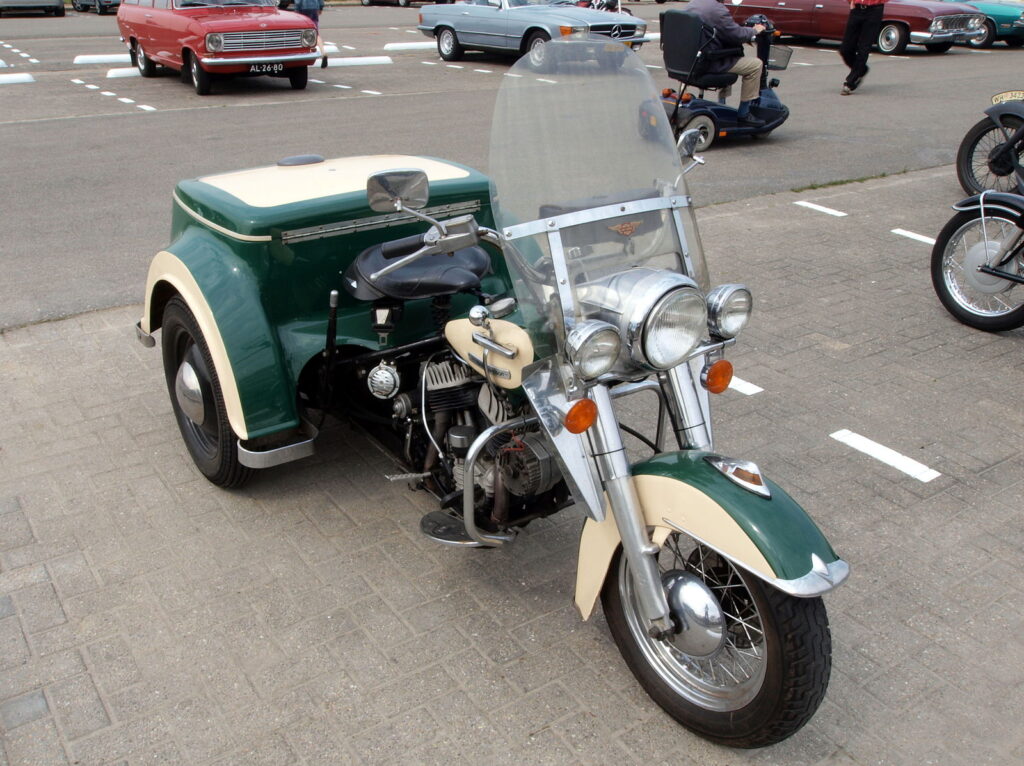
They were one of only two American motorcycle manufacturers to survive the “Great Depression.” The other was the Indian Motorcycle Manufacturing Company.
Harley-Davidson, Inc. again produced large numbers of motorcycles for the US Army during WWII. This included a military-specific version of its 45 cubic-inch (740 cm3) model called the “WLA” (the “A” standing for “Army”). All told, more than 90,000 military motorcycles were manufactured.
For their extraordinary war-time efforts, Harley-Davidson, Inc. received two Army-Navy “E” Awards; one in 1943, the other in 1945, for “Excellence in Production.”
At the close of WWII, Harley-Davidson, Inc. resumed civilian production, manufacturing a selection of large V-twin motorcycles–built for both open highways and racetracks.
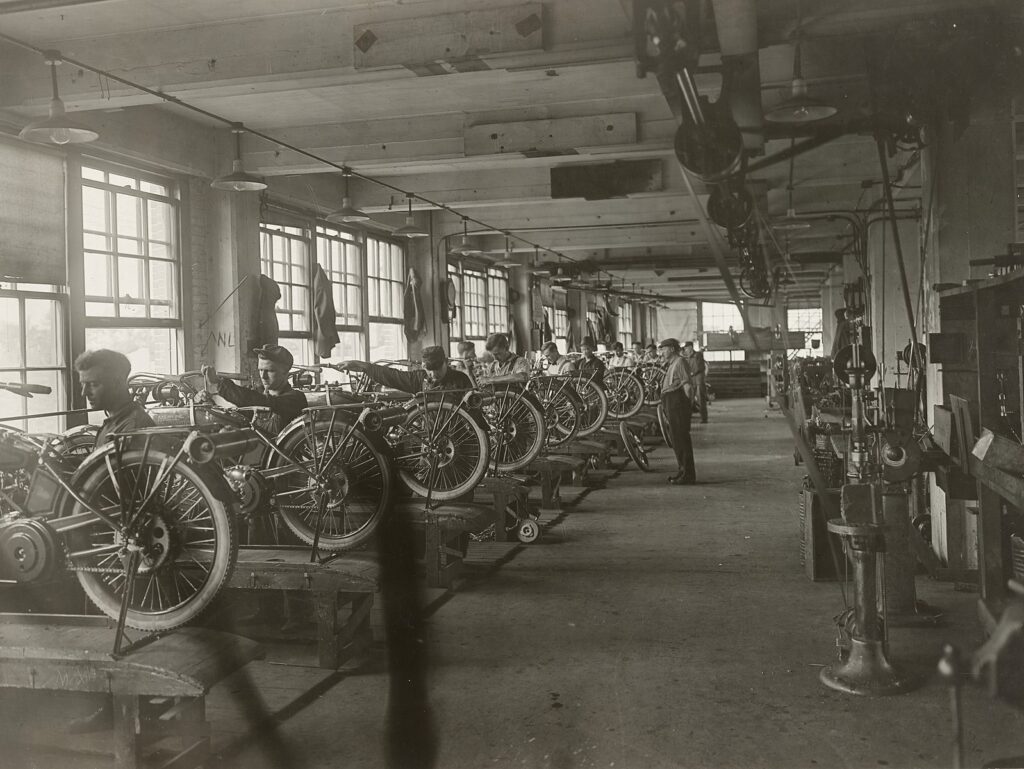
A Reputation Tarnished
In 1952 (nine years after Harley died, two years after Davidson) after petitioning the US Tariff Commission for a 40% tax on imported motorcycles, Harley-Davidson, Inc. was charged with “restrictive practices.” This ultimately affected production, popularity, and financial growth.
Efforts to Save the Struggling Company
In 1969, the recreational equipment company American Machine and Foundry (AMF) acquired Harley-Davidson Inc. They streamlined production and slashed the workforce. This tactic resulted in a labor strike and cost-cutting, resulting in an era of low-quality bikes.
Ironically, even as the US market was flooded with inexpensive post-Vietnam-era Japanese-made bikes (Honda, Kawasaki, Suzuki, and Yamaha), Harley-Davidson models were disproportionately expensive.
They were also inferior in performance, quality, and handling. Sales quickly dropped–the company nearly went bankrupt.
Reconstruction, Retro Marketing, Recovery
In 1981, AMF sold the floundering company to a conglomerate of 13 investors. These were led by businessmen Vaughn Beals and Willie G. Davidson (grandson of Harley-Davidson co-founder, William A. Davidson). It sold for a reported $80 million.
New management immediately set out to improve product quality, introduce technological advances, and adopt “just-in-time” management. They started to produce bikes “as needed.”

Additionally, rather than try to compete with popular Japanese designs (flooding the US market), management decided to exploit the “retro” image of Harley-Davidson motorcycles. They started to build machines with the look and feel of earlier, signature bikes, along with customization features common to owners of that era.
By 1990, with the introduction of the so-called “Fat Boy” model, Harley-Davidson was once again the sales leader in the heavyweight (over 750 cc) motorcycle market.
“Channel Stuffing” and Fraud
Beginning in 1990 and extending into the first decade of the 21st century, Harley-Davidson’s reputation again suffered. They were accused of “channel stuffing,” a method of illegally inflating sales figures to manipulate stock prices.
As a result, in April of 2004 alone, the price of HOG (a marketing club owned by Harley-Davidson) shares dropped from $60 to under $40. To add to the deception issue, just prior to this decline, retiring Harley-Davidson CEO Jeffrey Bleustein profited $42 million by “exercising” employee stock options.
Since that time, Harley-Davidson has been named as a defendant in numerous class-action lawsuits (2004, 2007, 2011, 2022). They were filed by investors who claimed that they were intentionally defrauded by Harley-Davidson’s management.
As of 2007, Harley-Davidson stock shares recovered to $70—but their reputation has suffered in the US.
Milestones
Beginning with Harley-Davidson’s 90th anniversary in 1993, the company has had celebratory rides to Milwaukee called the “Ride Home.” This tradition has continued every five years and is referred to unofficially as “Harleyfest.”
On September 1, 2003, Harley-Davidson celebrated its 100th anniversary with a large media event and concert. It featured performances from Tim McGraw, Elton John, Kid Rock, and The Doobie Brothers.
In 2004, William S. Harley, Arthur Davidson, William A. Davidson, and Walter Davidson Sr. were inducted into the Labor Hall of Fame for their extraordinary accomplishments for the Harley-Davidson company and employees.
On June 1, 2006, construction began on the $75 million, 130,000-square-foot Harley-Davidson Museum in Menomonee Valley, Milwaukee. Opening in 2008, it houses the company’s vast collection of historic motorcycles, as well as a café, restaurant, and meeting/conference space.
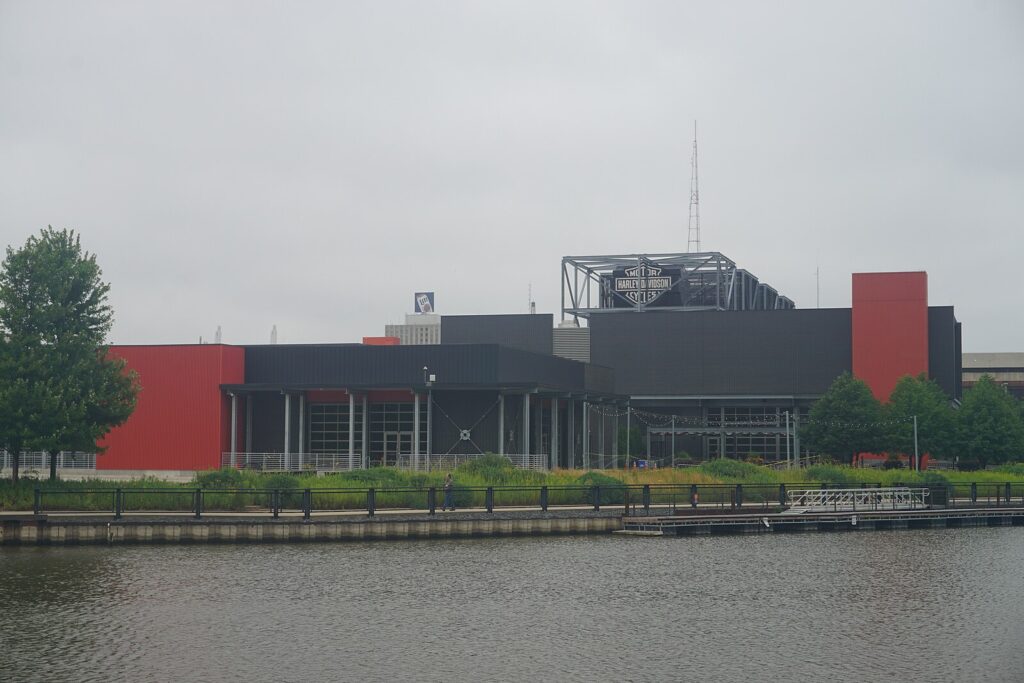
The Harley-Davidson 105th anniversary celebration was held on August 28–31, 2008. Events were held in Milwaukee (as well as Waukesha, Racine, and Kenosha counties). The 110th-anniversary celebration was held on August 29–31, 2013 (in the same locations).
For their 115th anniversary, Harley-Davidson held their celebration on July 5–8, 2018, in Prague, Czech Republic (the country with the oldest existing Harley-Davidson Club). More than 100,000 visitors and 60,000 bike owners participated. The 120th anniversary celebration was held in Budapest, Hungary, with the parade on June 24, 2023.
Looking to the Future
Today, Harley-Davidson has plants in York, Pennsylvania; Milwaukee, Wisconsin; Manaus, Brazil; Bawal, India; and Pluak Daeng, Thailand—with thousands of outlets world-wide.
The company also markets a wide selection of merchandise under the Harley-Davidson brand. Among them: bike and casual clothing, home décor, scale model motorcycles, bike accessories, toys, and video games based on its motorcycle line and the Harley-Davidson enthusiast community.
References
throttlegr.com., “The History Of Harley Davidson Motorcycles,” The History Of Harley Davidson Motorcycles – A Look Back In Time (throttlegr.com)
harley-davidson.com., “The Early History of Harley-Davidson,” The Early History of Harley-Davidson | Harley-Davidson USA
entrepreneur.com., “William S. Harley, Arthur Davidson, Walter Davidson & William Davidson,” William S. Harley, Arthur Davidson, Walter Davidson & William Davidson | Entrepreneur
artsandculture.google.com., “The Founders of Harley-Davidson,” The Founders of Harley-Davidson — Google Arts & Culture